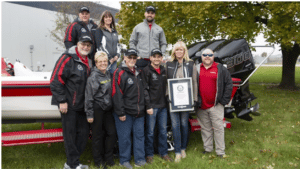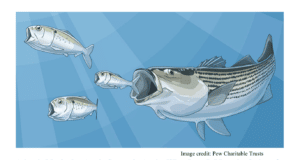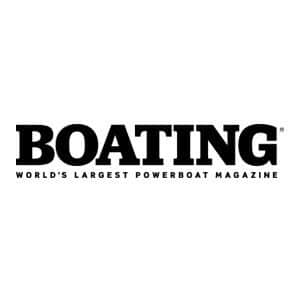Your lift should accommodate the water in which you boat, so your home port is a key factor in choosing a lift. In general, lifts fall into four categories: four- or eight-post, overhead, floating (great wherever there’s a rapid bottom drop-off) and free-standing (great in severe winter areas). Consider also …
Manual or Electric?
Some lifts are manually operated with a spinner wheel. Some have electric winches, which are more convenient but require a safe power source as well as more care and maintenance.
Check the Specs
Your boat’s length, beam and weight are the determining factors in specifying a lift. Better to overspecify than to cut it too close.
Do Your Homework
Many boat lift manufacturers work with the local dealers who do the installation. You’ll have to turn to the local guy if service is needed. Check him out via the Better Business Bureau, word of mouth or online.
Warranty
Better lifts come with a minimum one-year warranty on the motor and a lifetime guarantee on the lift assembly.
Stainless vs. Galvanized
Salt water is harsher on the pulleys, cables and framework. There’s no doubt that stainless-steel fittings are best suited for lifts. But for freshwater use, stainless could be considered a luxury. Let your home water guide you.
Cradle — Custom or Adjustable?
Boat lifts are constructed similarly to trailers: They use bunks that “cradle” the hull. Insist upon adjustable bunks so that you have the flexibility to get a new ride later on.
Sling Style
If you’re on a very shallow shoreline, consider a sling-style lift rather than one with a cradle design. Flexible slings lie flat on the bottom and will let you dock as long as you can float.
Check the Pulleys
To reduce friction and wear, specify ball-bearing pulleys. Each time you use the lift, the weight of your boat is stressing all the moving parts of the assembly, causing friction. The easier the pulleys turn, the less friction.
Maintenance Tips
Protect the cables with an occasional spritz of spray lubricant, which will help reduce friction and the adverse effects of weather, especially in saltwater areas.
Think of the lift the same as if it were a trailer. After each use, wash it down with fresh water to remove salt, slime and dirt.









